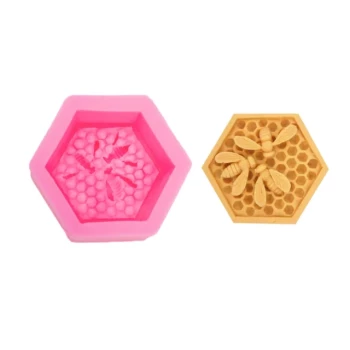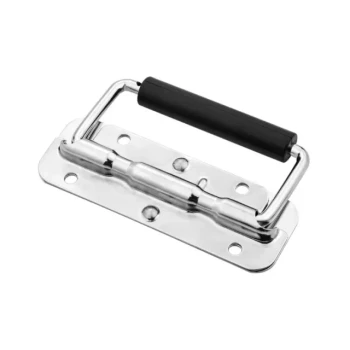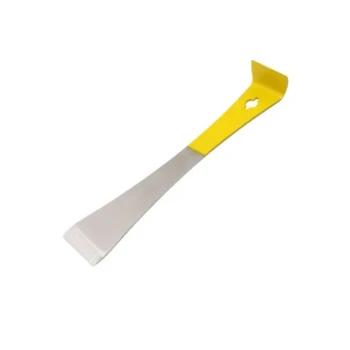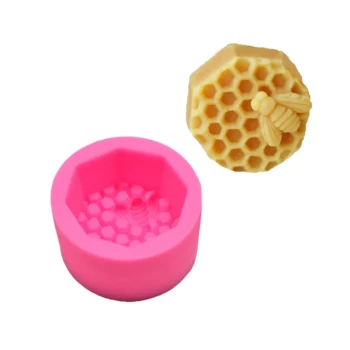In the context of beekeeping, a phoretic mite is a Varroa destructor mite that is attached to the body of an adult bee. This "hitchhiking" phase is a critical part of the mite's life cycle, allowing it to feed and travel throughout the hive before it seeks a brood cell to reproduce. The number of phoretic mites is precisely what beekeepers measure when conducting routine mite checks.
The term "phoretic" describes the mobile phase of a Varroa mite's life when it's on an adult bee, as opposed to the reproductive phase inside a capped brood cell. Monitoring these phoretic mites is the primary way beekeepers assess a colony's infestation level and determine the need for treatment.
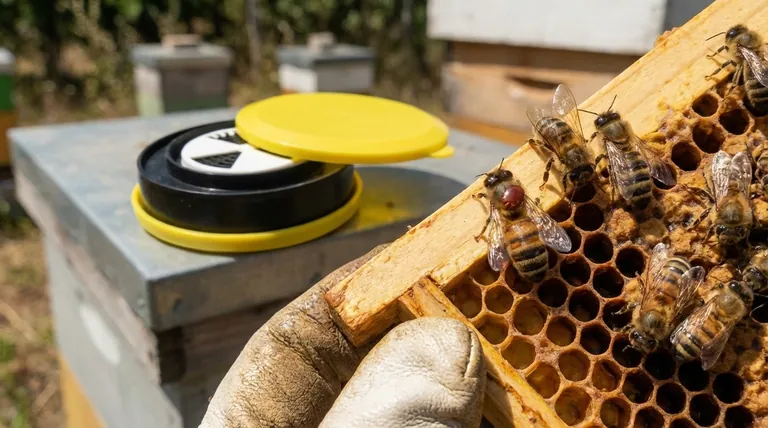
The Two Phases of the Varroa Mite Life Cycle
To understand the importance of the phoretic mite, you must understand the two distinct stages of a Varroa mite's life within a honey bee colony.
The Phoretic (Traveling) Phase
This is the stage where the mite is on an adult honey bee, often a worker or drone. The mite is not passive; it actively feeds on the bee's fat body tissue.
Most phoretic mites hide for protection, tucking themselves underneath the bee between the abdominal segments, called sclerites. This phase can last for several days.
The Reproductive (Hidden) Phase
The true purpose of the phoretic phase is transportation. The mite is waiting to find a brood cell with a larva of the right age.
Just before the cell is capped, the female mite detaches from the adult bee, enters the cell, and is sealed inside with the developing bee. Here, hidden from view, she lays her eggs, leading to a rapid increase in the mite population.
Why Monitoring Phoretic Mites is Critical
Since the reproductive phase happens under capped brood, counting phoretic mites is the only practical way for a beekeeper to gauge the health of their colony.
A Window into the Infestation
Standard monitoring techniques, such as an alcohol wash or a sugar shake, work by dislodging phoretic mites from a sample of adult bees. The resulting mite count provides a vital snapshot of the overall infestation level.
An Indicator of Infestation Severity
Seeing mites with the naked eye on the backs of bees is a clear sign of a problem. If you can easily spot phoretic mites, the colony's infestation level is likely high and has progressed to a dangerous stage.
The Pitfall: What Phoretic Mites Don't Tell You
Relying solely on phoretic mite counts without understanding the full context can be misleading. This is the most common mistake a beekeeper can make.
The Hidden Majority
The phoretic mites you count are only the "tip of the iceberg." At any given time, especially when a colony has a lot of capped brood, the majority of the mite population (50-80% or more) is hidden away in the reproductive phase.
Ineffective Treatment Timing
Many mite treatments are contact-based and only kill phoretic mites. They cannot penetrate the wax cappings to kill the mites reproducing inside.
Understanding this distinction is crucial. A treatment might temporarily reduce your phoretic mite count, but a new wave of mites will emerge as the brood hatches, quickly re-establishing the infestation.
Using Phoretic Mite Counts for Hive Management
Your phoretic mite count is your most important data point for making treatment decisions. Here is how to apply this knowledge based on your goal.
- If your primary focus is routine monitoring: Regularly perform mite washes to count phoretic mites and track your infestation level against established treatment thresholds for your region.
- If your primary focus is choosing a treatment: Recognize that your phoretic count represents the mites a contact treatment can immediately target, but you must also consider the hidden mites that will emerge later.
- If your primary focus is assessing a weak colony: Visibly seeing multiple phoretic mites on bees without even performing a formal count is a strong indicator of a dangerously high infestation requiring immediate action.
By understanding the significance of phoretic mites, you move from simply seeing a pest to strategically managing your colony's long-term health.
Summary Table:
| Aspect | Key Information |
|---|---|
| Definition | Varroa destructor mites attached to adult honey bees in the 'hitchhiking' phase of their life cycle. |
| Primary Function | To feed on bees and travel the hive before entering brood cells to reproduce. |
| Monitoring Method | Counted via standard tests like an alcohol wash or sugar shake on a sample of adult bees. |
| Significance of High Count | A high phoretic mite count indicates a severe overall infestation, as it's the 'tip of the iceberg'. |
| Limitation | Represents only a fraction (20-50%) of the total mite population; the majority are hidden in capped brood. |
Protect Your Apiary with Professional-Grade Equipment
Effectively managing phoretic mites starts with the right tools. HONESTBEE supplies commercial apiaries and beekeeping equipment distributors with the durable, reliable supplies needed for accurate monitoring and effective mite control.
From mite testing kits to treatment solutions, our wholesale-focused operations ensure you get the equipment that protects your investment and promotes colony health.
Ready to strengthen your hive management strategy? Contact our team today to discuss your apiary's needs.
Visual Guide
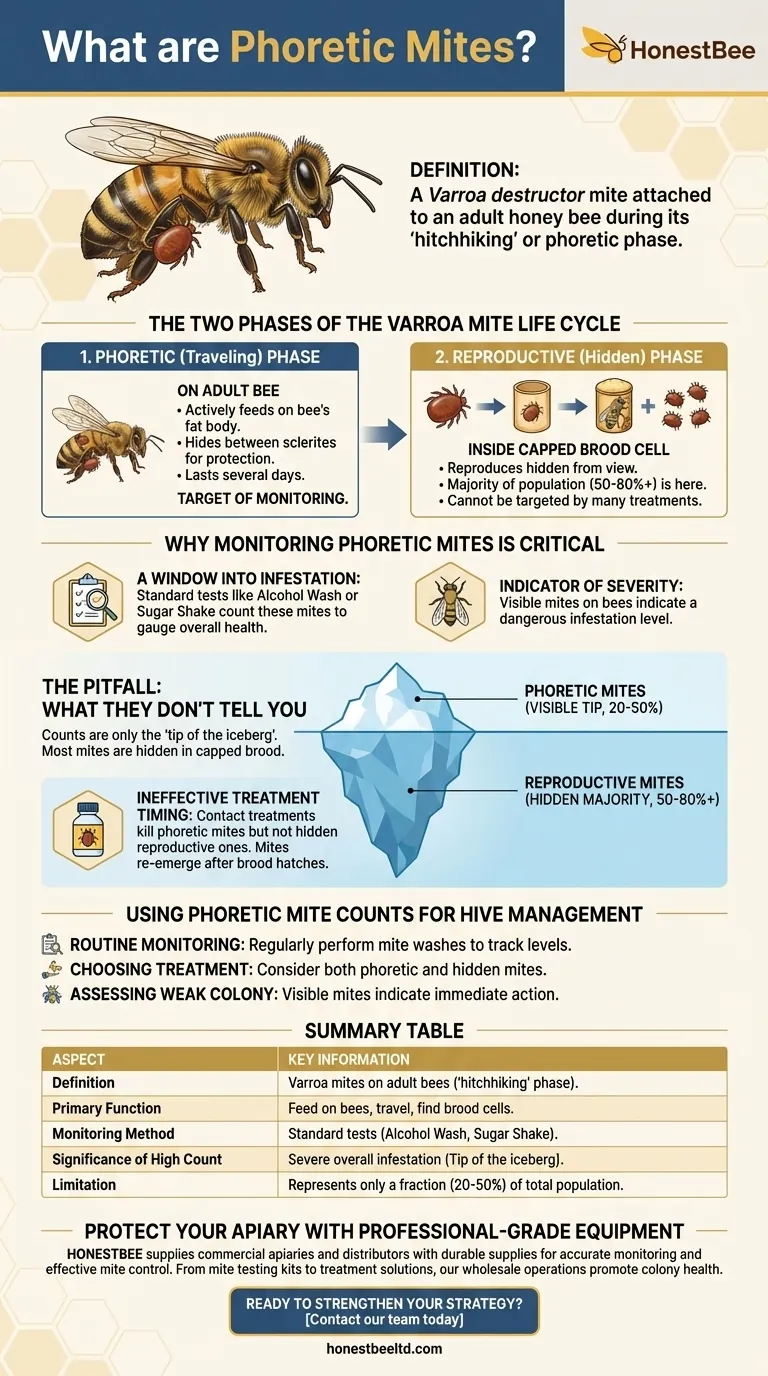
Related Products
- Adjustable Formic and Acetic Acid Dispenser for Bee Mite Treatment
- Varroa Easy Check Mite Tester Kit Counter Alcohol Wash Jar
- Professional Grade Foldable Beehive Handles
- Black Plastic Beetle Barn Hive Beetle Trap for Beehives
- 3D Beehive Silicone Skep Wax Candle Molds for Candles
People Also Ask
- What are the symptoms of Varroa Mite Syndrome (VMS)? Recognizing the Signs of Colony Collapse
- What is the optimal time for varroa mite control in nucs? Maximize Efficacy with Perfect Timing
- What should be done after treating a colony for varroa mites? A Step-by-Step Guide to Verifying Success
- How can beekeepers ensure their hives survive the winter? A Guide to Colony Survival
- What are some common predators and pests that target beehives? Protect Your Hives from Bears, Mites, and Beetles





